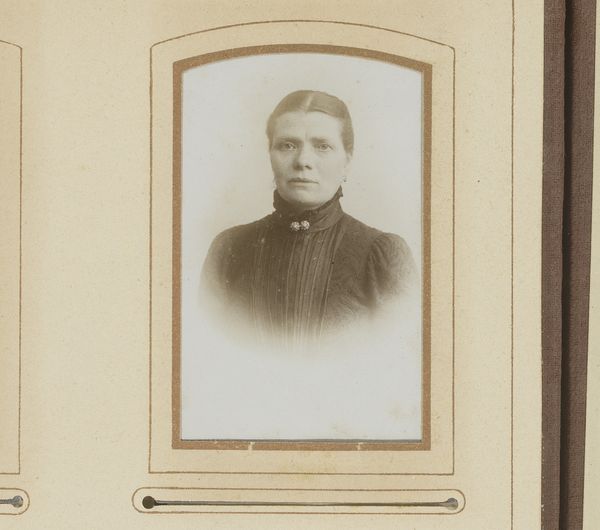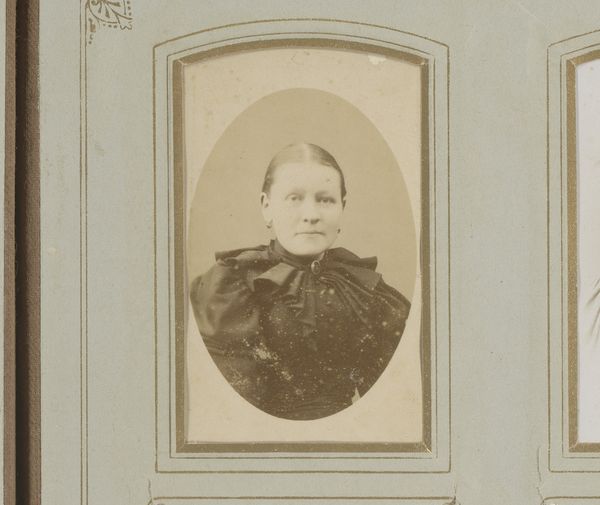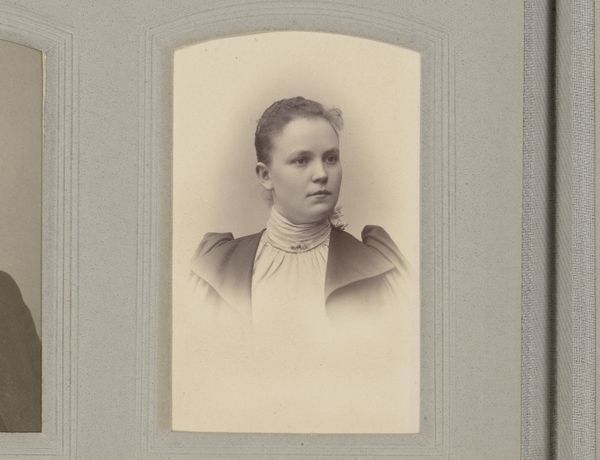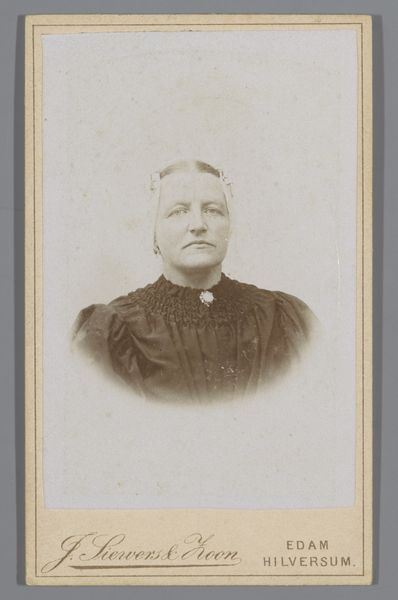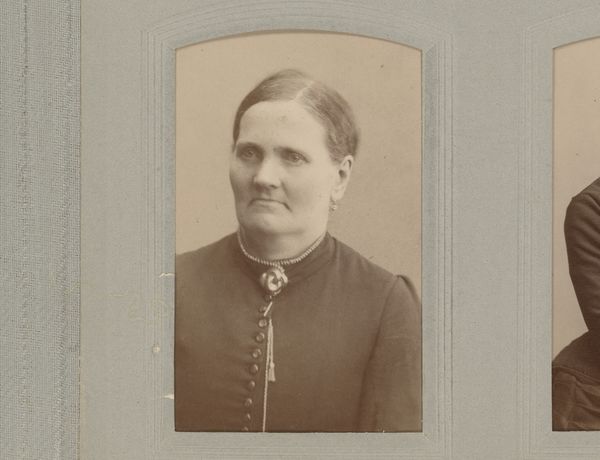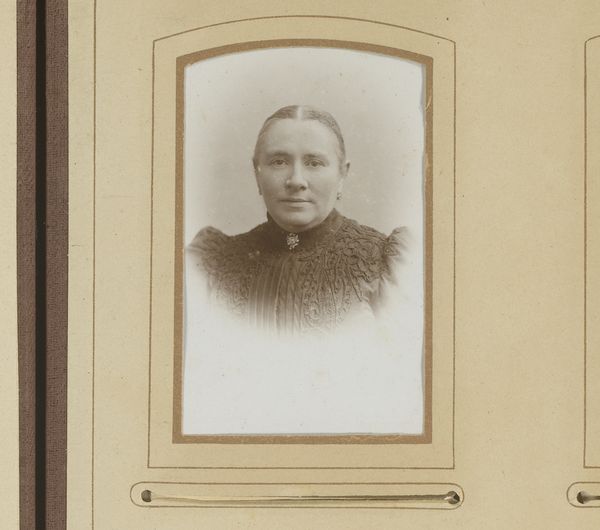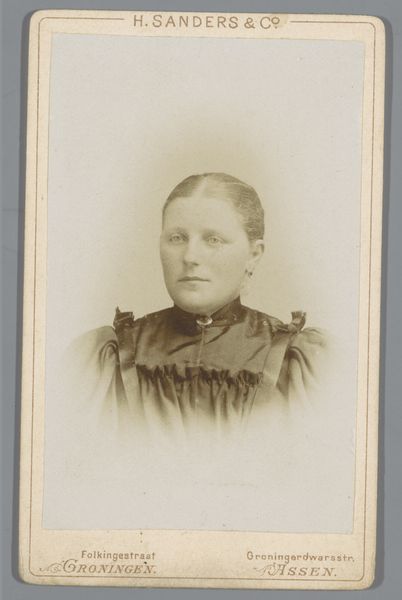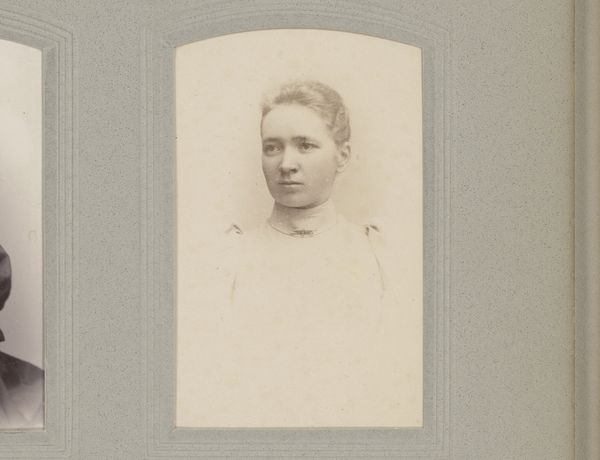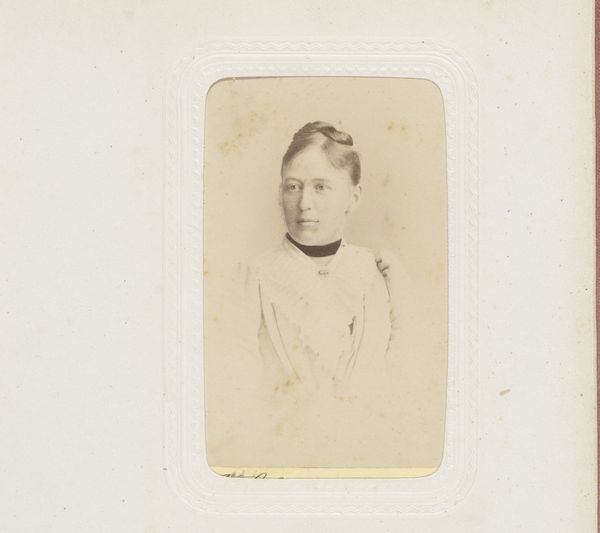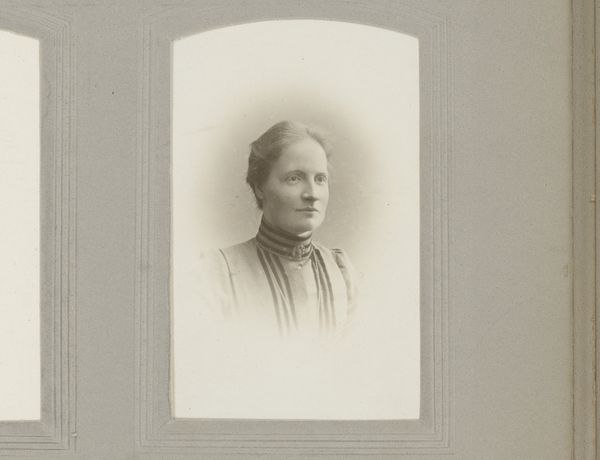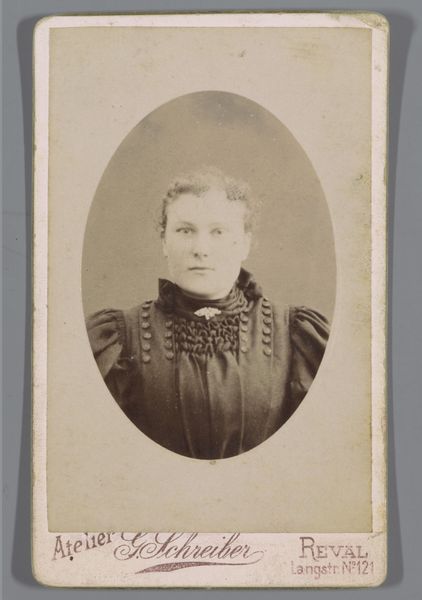
photography
#
portrait
#
pictorialism
#
photograph of art
#
white clean appearance
#
photography
#
portrait reference
#
framed image
#
white focal point
#
portrait drawing
#
fine art portrait
Dimensions: height 83 mm, width 51 mm
Copyright: Rijks Museum: Open Domain
Curator: Looking at this photograph, entitled "Portret van een vrouw met oorbellen," dating roughly from 1880 to 1920, what are your initial impressions? Editor: A striking stillness pervades this piece. It has a subdued, almost mournful quality, heightened by the monochromatic palette and the subject's direct gaze. The composition, a very tight framing, also contributes to a sense of intimacy. Curator: Indeed. This work invites us to consider the techniques employed by early photographers aiming to create portraits akin to painted likenesses. The careful control of light and shadow, and the soft focus effects...these echo the sensibilities of pictorialism. The framed setting adds an important element. Editor: It is interesting how those stylistic decisions simultaneously create distance. We see the trappings of formality. That setting feels designed to put people at ease but may reinforce notions of class and the privilege associated with being the subject of such art. Do you suppose her dress reveals aspects of that time? Curator: Precisely. While the technical and formal elements draw me in, it is crucial to note the broader historical context within which these photographs circulated. How such images constructed and reinforced societal norms concerning gender, class, and perhaps even mourning practices through very clear and visual codes. This era was marked by distinct performative approaches to commemorating events. The subtle patterns in her clothing play with light to make one consider it is from mourning garments, too. Editor: That makes me rethink my sense of subdued mourning. Maybe that stillness also echoes certain poses in Renaissance painting? The frame seems as vital to the artwork as is her likeness. But looking back to our own contemporary world of photographic representation...can we separate form from intent anymore when the photographic process is so ingrained? Curator: Perhaps not entirely separate them, but remain attuned to their intricate dance. Ultimately, art encourages questions about how meanings are both created and perceived. Editor: Right, and sometimes questions, rather than firm answers, offer the more compelling insights into ourselves.
Comments
No comments
Be the first to comment and join the conversation on the ultimate creative platform.
